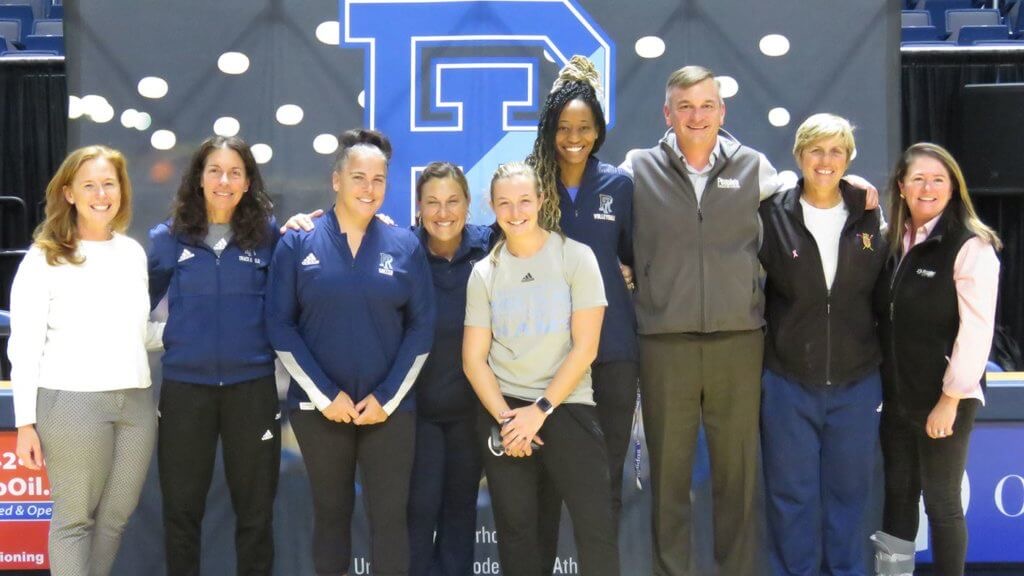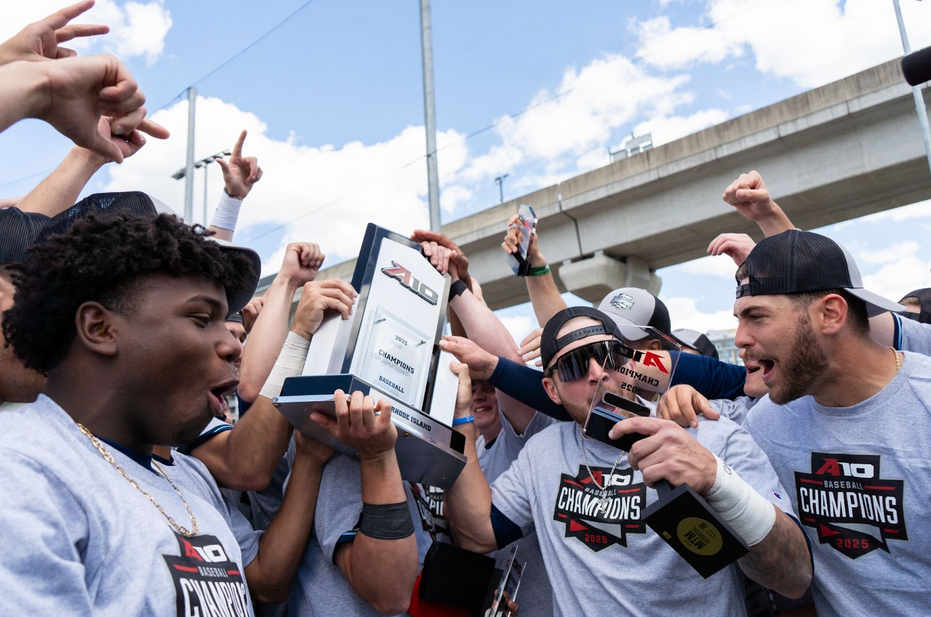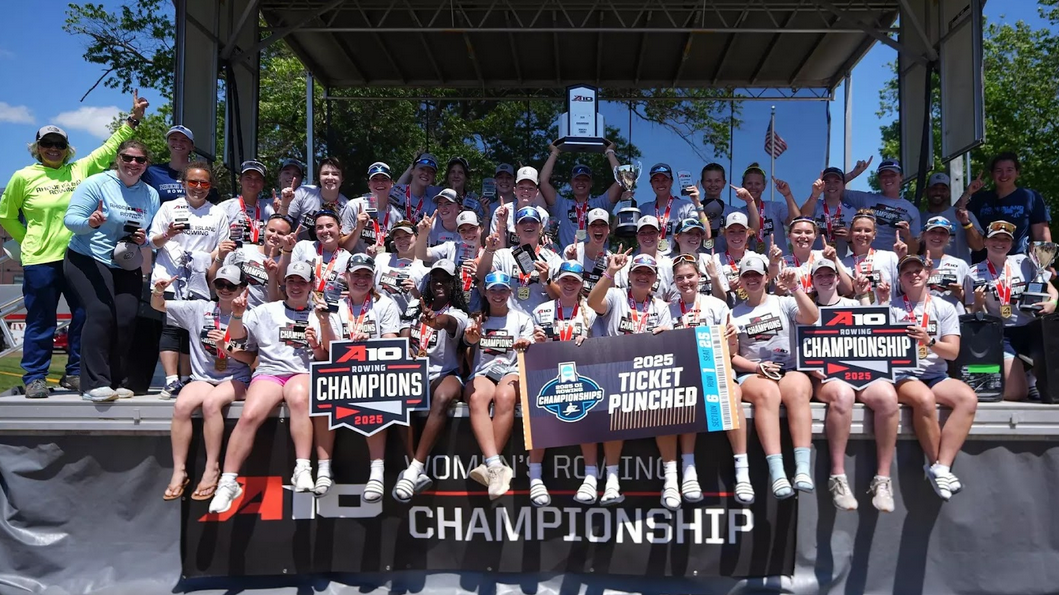URI is among a handful of schools around the country that received an A grade for its percentage of women’s coaches coaching women’s teams. PHOTO CREDIT: gorhody.com
When Title IX was enacted in 1972, 90 percent of women’s sports teams were coached by women.
Fifty years later, as we celebrate the golden anniversary of this landmark legislation, things have trended in the wrong direction.
According to the Women In College Coaching Report Card, a research study conducted by the University of Minnesota’s Tucker Center for Research on Girls and Women in Sport in conjunction with the Alliance of Women Coaches, 42.7 percent of Division I women’s teams were coached by women during the 2020-21 academic year.
The University of Rhode Island, however, stands as an outlier nationwide, as all nine of its varsity women sports teams are coached by women. The school was also one of 20 Division I schools to receive an A grade in the study.
“It’s a fantastic accomplishment from the University’s perspective,” Director of Athletics Thorr Bjorn said. “It’s something we should be striving for.”
Gina Sperry, the department’s Senior Women’s Administrator, understands the value of being given an opportunity to coach as a former cross country and track and field coach herself.
“There’s no question that in my field knowing that there’s not a lot of women that get that opportunity to become a head coach,” Sperry said. “That’s going to be really important and salient to me because someone gave me a chance in a male-dominated field to become a head coach. I know that women can do it. I know that they have the skillset.”
The trends are similar at the administrative level. According to the NCAA Demographic Database, only 36 percent of Division I Associate Athletic Directors were women in 2021. Eight of the school’s 13 Associate Athletic Directors/senior administrators (64 percent) are women. Sperry, being one of them, said it has been a pleasure working with such a diverse group.
“I look around during meetings or on Zoom and there’s a lot of women at the table,” Sperry said. “Everybody brings a unique and different experience and a different set of values in how they think about things and I think that is important.”
Brittney Miles is another one of the eight women that works on the senior administrative team. A former student-athlete herself, she serves as the sports administrator for the men’s basketball and football team — a position typically dominated by men.
“I know in my first year, I was sitting in on a lot of administrator meetings trying to learn the job and understand that I’m usually the only woman on an A-10 call or a CAA call,” Miles said. “It struck me several times and I was like ‘okay, so it’s still primarily a boys network of administration and leadership,’ particularly around football and men’s basketball. It is something that I’m cognizant of and I’m so appreciative of Thorr for trusting me in this role.”
Last year, the school announced the addition of a women’s lacrosse team in order to remain in compliance with Title IX. The program will begin competition in the A-10 in 2025 and is set to hire a coach in the near future. Although he hasn’t dove into the search process yet, Bjorn values the importance of having a woman leader.
“We are going to look at people that meet the requirements and then once that is done, who do we think is the right fit,” Bjorn said. “That said, I think there is a benefit to hiring a female to coach our female teams whenever possible.”
Many agree that there is still a long way to go in terms of achieving gender equity in sports. From salaries to everyday amenities, progress has been made, but Sperry and Bjorn say there’s still more work to do.
“How do women start making the same type of salaries that men do?” Sperry asked. “Let’s look at basketball. Tammi Reiss and Archie [Miller]’s contracts are very different in terms of what they get paid [and] what their assistants get paid. I hope for the next generation that comes in these roles that they start to advocate and fight for that. We’ve made some good strides on our women’s side with salaries to bump them up when we’ve had that opportunity, but you also have to have that funding source.”
“It’s our obligation,” Bjorn said. “It’s the legal obligation following our Title IX responsibilities, but it’s so much more than that. It’s a wonderful responsibility to provide first-class opportunities for our female student-athletes and nothing gets better overnight so how do we get better everyday.”




